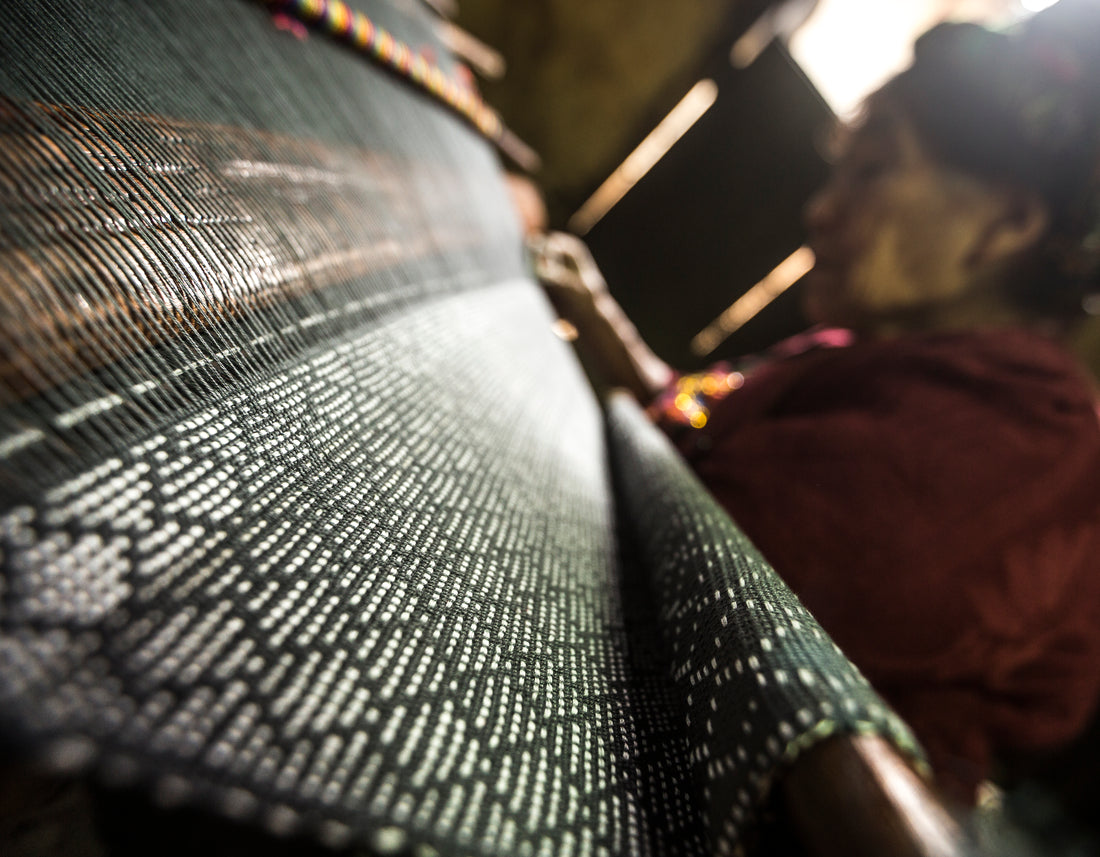
An introduction to the Mayan textiles
Share
 Clothes represent our social skin. This applies particularly to the Mayan culture where the woven textiles are a kind of art which identifies with ancestral traditions. This art symbolizes and expresses the Mayan beliefs through lines, colours, and figures, granting us the capacity to feel, experience, and appreciate the relationship between the cosmos and daily life. In this artistic-spiritual expression, we can see a beautiful mixture of motifs and designs that create particular cultural signs. The meaning of these cultural signs is determined by an established agreement among the people of the community. Each sign consists of two parts: one part is material; the other part is non-material. The latter is the meaning which textiles evoke in our heads; both are united and reciprocal. In a woven textile, a variety of meanings can intertwine at a conceptual level parts of a greater whole, informed by a myth, legend, belief, or story.
Clothes represent our social skin. This applies particularly to the Mayan culture where the woven textiles are a kind of art which identifies with ancestral traditions. This art symbolizes and expresses the Mayan beliefs through lines, colours, and figures, granting us the capacity to feel, experience, and appreciate the relationship between the cosmos and daily life. In this artistic-spiritual expression, we can see a beautiful mixture of motifs and designs that create particular cultural signs. The meaning of these cultural signs is determined by an established agreement among the people of the community. Each sign consists of two parts: one part is material; the other part is non-material. The latter is the meaning which textiles evoke in our heads; both are united and reciprocal. In a woven textile, a variety of meanings can intertwine at a conceptual level parts of a greater whole, informed by a myth, legend, belief, or story.The traditional Mayan clothes identify a man or woman as Mayan, represent their culture, linguistic group, tell stories, and send messages. The clothes can reveal gender, ethnicity, position in social and religious hierarchy, or refer to daily trajectory or ceremony. Although these elements are found in all Mayan garments, it is the “huipils” that are the most expressive and artistic. They are traditionally hand woven on a loom and worn by Mayan women.
The meaning behind the symbols is different for each Mayan community. Because of variety in cultural contexts, each group chose their own symbols when they began creating their textiles. Mayans have been weaving for over two thousands years. Nevertheless, with the arrival of the Spanish conquistadors in the early 1500’s, and therefore new materials, tools, techniques and sources of inspiration, they started to weave much more elaborate pieces.

First and last strap represent birds carrying a baby bird on their back. The middle part shows squares and also the X shape. The square is the most basic symbol in Mayan weavings representing the four cardinal points of the Mayan cross. The X stands for “Ix” which means woman in Quiché and represents the female energy that is very present in Mayan culture.
 For the making of these designs in the woven textiles, the most commonly used tool is the backstrap loom, because a Mayan weaver can combine techniques in a way she wouldn’t be able to with other kinds of looms. This loom is a very simple instrument that consists of joint wooden poles, a rope, and a band or leather strap used to secure the loom to the weaver. To provide tension, the larger pole is tied to a fixed support and the smaller pole is tied to the weaver. One of the principle advantages of the backstrap loom is that it permits the weaver to control everything about the work that she is doing. Small changes in the position of the body can create variations in the texture of the fabric. This is the essential tool that allows the weaver to produce an enormous range of woven textiles which follow the patterns inherited from her ancestors: diamonds, decorative borders, animals, etc.
For the making of these designs in the woven textiles, the most commonly used tool is the backstrap loom, because a Mayan weaver can combine techniques in a way she wouldn’t be able to with other kinds of looms. This loom is a very simple instrument that consists of joint wooden poles, a rope, and a band or leather strap used to secure the loom to the weaver. To provide tension, the larger pole is tied to a fixed support and the smaller pole is tied to the weaver. One of the principle advantages of the backstrap loom is that it permits the weaver to control everything about the work that she is doing. Small changes in the position of the body can create variations in the texture of the fabric. This is the essential tool that allows the weaver to produce an enormous range of woven textiles which follow the patterns inherited from her ancestors: diamonds, decorative borders, animals, etc.The Mayan population totals around 14 million people, mainly found in Guatemala. Found in various regions of Guatemala, with diverse languages and cultures, these people give the country the great richness which can be found today. At Trama Textiles we work directly with 17 weaving cooperatives representing 400 women five regions in the western highlands of Guatemala: Sololá, Huehuetenango, Sacatepéquez, Quetzaltenango and Quiché.

